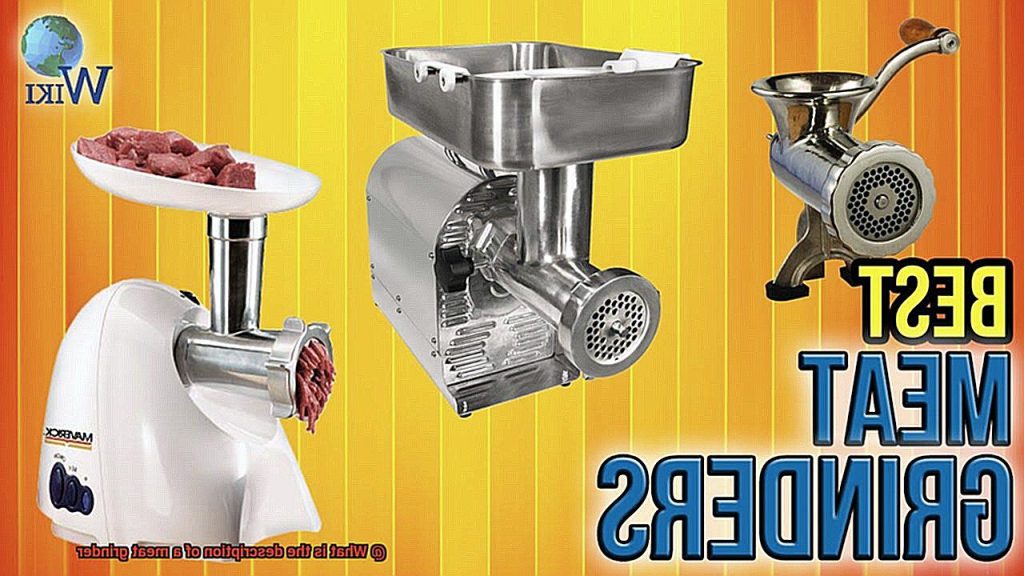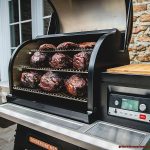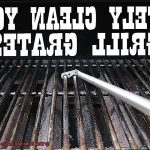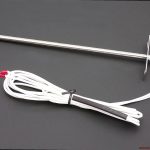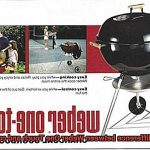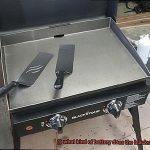Do you love the taste of freshly ground meat, but find the process of manually chopping it up with a knife and cutting board to be a chore? Or perhaps you’ve tried making your own sausages, only to end up with inconsistent results from store-bought ground meat. If this sounds like you, then it’s time to consider investing in a meat grinder.
A meat grinder is an essential kitchen appliance that makes grinding meat into smaller pieces quick and easy. With different types of blades available, it can produce a range of grind sizes from fine to coarse. Whether you’re grinding beef, pork, chicken or even fish, the possibilities are endless.
However, not all meat grinders are created equal. There are manual grinders that require some elbow grease to operate but are typically more affordable and easy to clean. Electric grinders take the hassle out of grinding by using a motor for faster and more efficient results.
In this blog post, we’ll delve into the description of a meat grinder and explore different types available along with their features and functionalities. So whether you’re a foodie or just someone who loves experimenting in the kitchen, read on to discover everything you need to know about these magical machines.
Contents
What is a Meat Grinder?
Then a meat grinder might be just what you need. This kitchen appliance allows you to grind raw or cooked meat into small, uniform pieces, giving you the power to customize the texture and composition of your meat dishes.
Meat grinders come in various sizes and types, with electric models being more common in modern kitchens. Electric grinders use a motor to grind the meat, making it quick and effortless. Meanwhile, manual grinders require you to turn a crank handle manually, giving you more control over the grinding process. The size of the grinder will depend on the amount of meat that you want to grind. For home use, small ones are suitable, while large industrial-sized grinders are used in commercial kitchens.
A meat grinder typically comprises a hopper or tray where the meat is placed, a screw conveyor that pushes the meat through a grinding plate and a blade that cuts the meat into smaller pieces. The ground meat then comes out through a spout or chute. Additionally, the quality of the grinder’s blades and plates will affect the texture and consistency of the ground meat.
When choosing a meat grinder, consider factors such as the frequency of use and the durability of the material. Stainless steel is ideal for a meat grinder because it is durable, easy to clean, and rust-resistant. Aluminum is lightweight and less expensive than stainless steel but can corrode over time. Plastic grinders are not as durable as metal ones but are lightweight and inexpensive.
Aside from grinding meat for burgers, sausages, and meatloaf, meat grinders can also be used to make homemade pet food or baby food. They can also be used in recipes that call for ground meat like chili or spaghetti sauce.
Types of Meat Grinders
Meat grinders are an essential tool for anyone who loves to cook and enjoys the taste of freshly ground meat. With so many different types of meat grinders available, it can be challenging to decide which one is right for you. Here are the different types of meat grinders and their features:
Manual Meat Grinders:
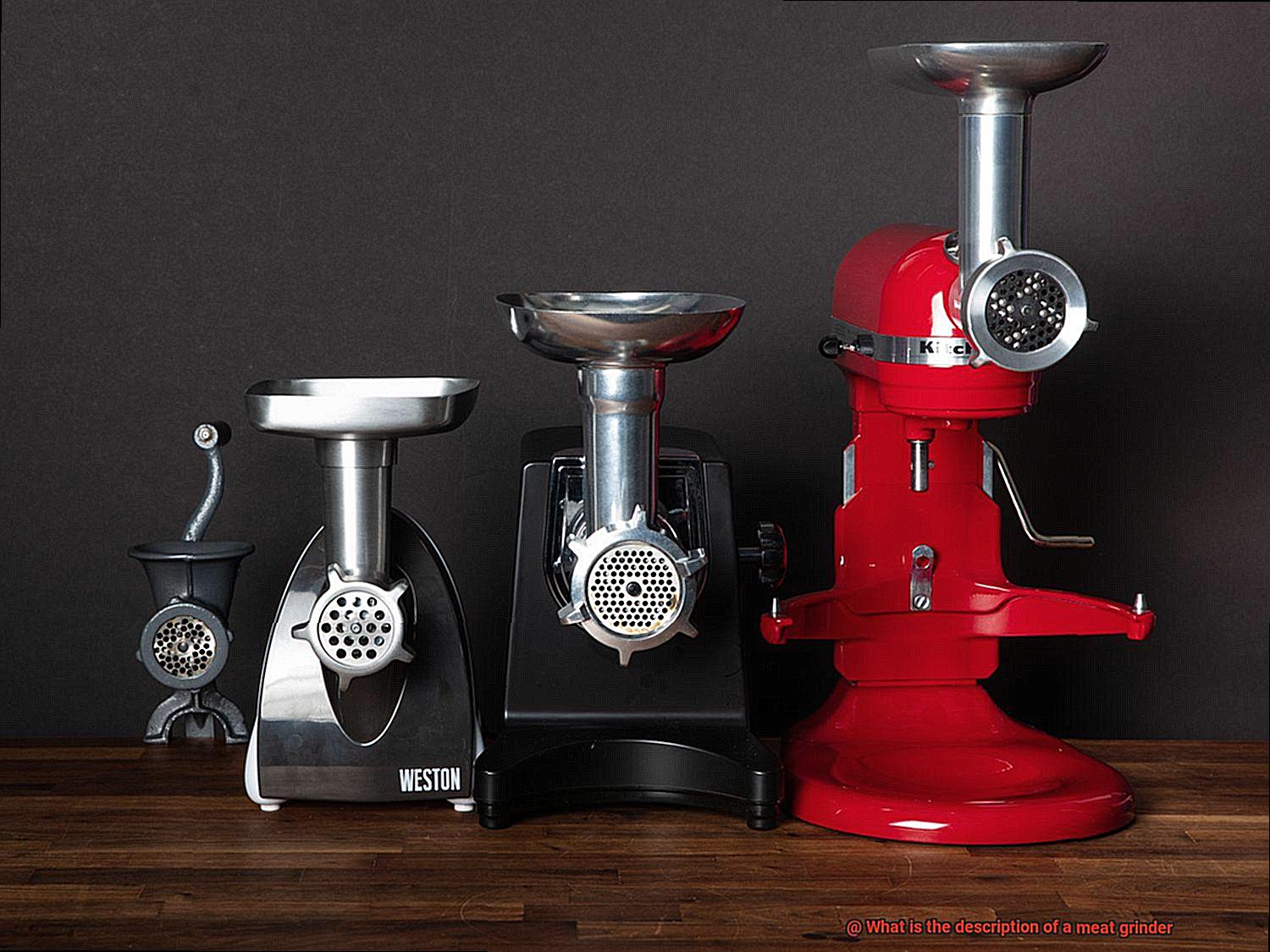
Manual meat grinders are perfect for those who only grind meat occasionally. These small and affordable grinders require you to turn a handle manually. They are typically made of durable materials such as stainless steel or cast iron, and they don’t require electricity, making them ideal for outdoor use or camping trips. Manual meat grinders are easy to clean and maintain, and they can be a great option for those who prefer a more traditional approach to grinding their own meat.
Electric Meat Grinders:
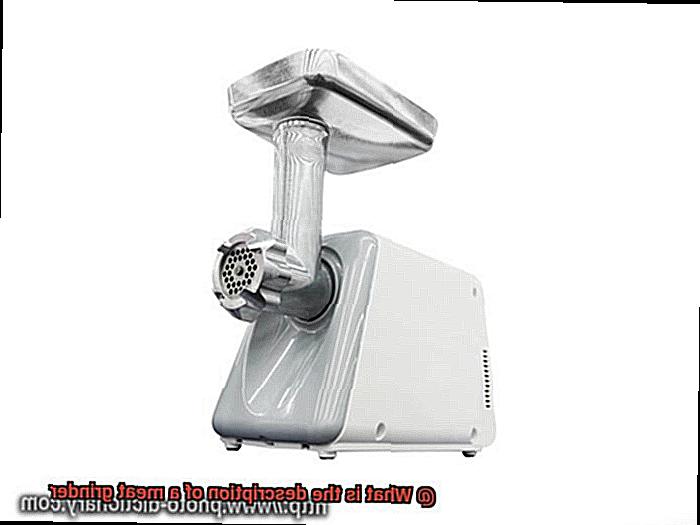
If you plan on grinding larger quantities of meat or frequently, an electric meat grinder may be a better option. Electric meat grinders come in different sizes, ranging from small countertop models for home use to large commercial-grade models. These grinders have a motor that powers the grinding process, making them faster and easier than manual meat grinders. Some electric meat grinders also come with additional attachments that allow you to make sausage or other types of ground meat products.
Stand Mixers with Meat Grinder Attachments:
Stand mixers with meat grinder attachments are versatile kitchen appliances that can be used for mixing dough, whipping cream, and grinding meat. These appliances have a motor that powers both the mixing and grinding processes, making them efficient and easy to use. Stand mixers with meat grinder attachments are perfect for those who want to save space in their kitchen but still want the benefits of both a stand mixer and a meat grinder.
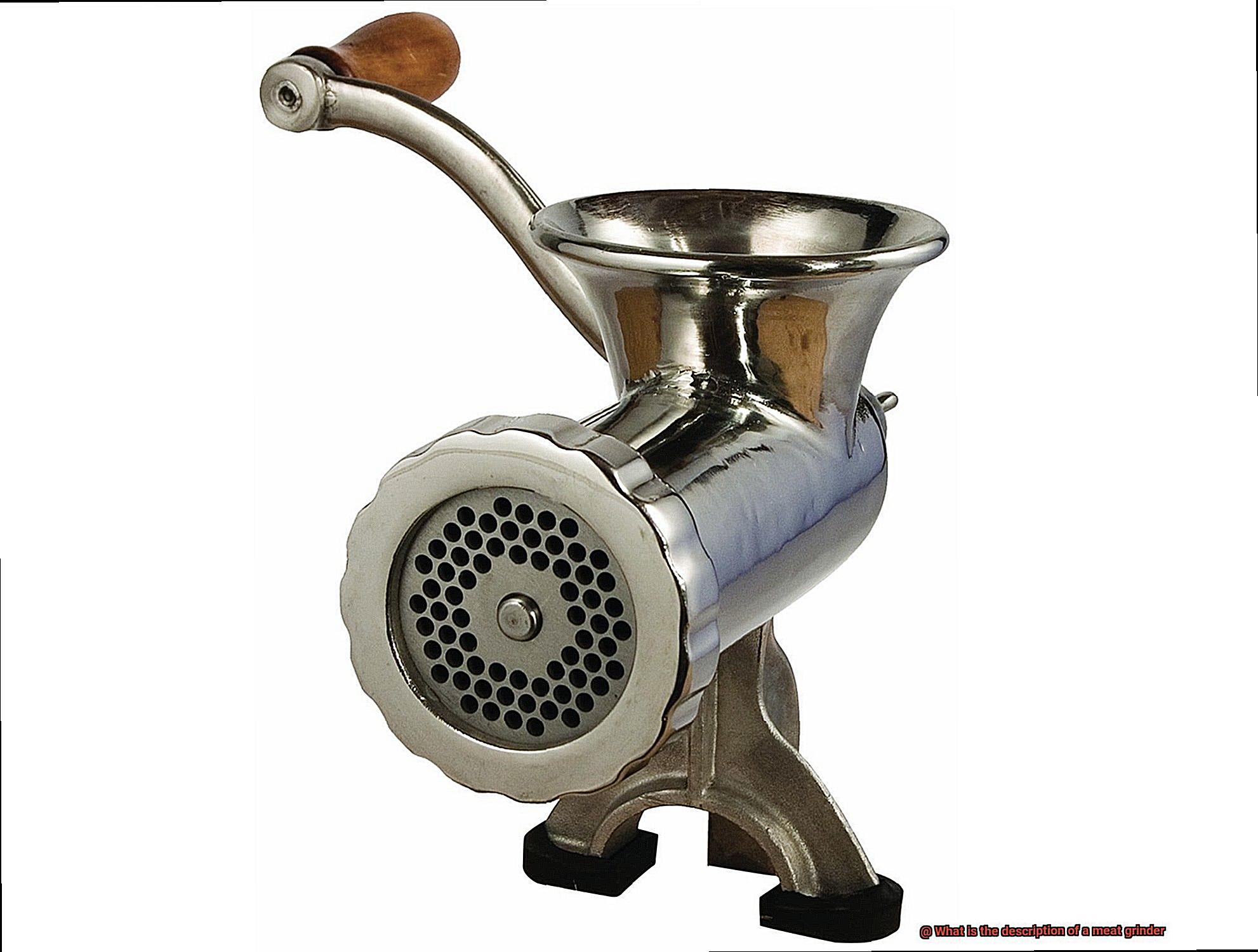
Commercial Meat Grinders:
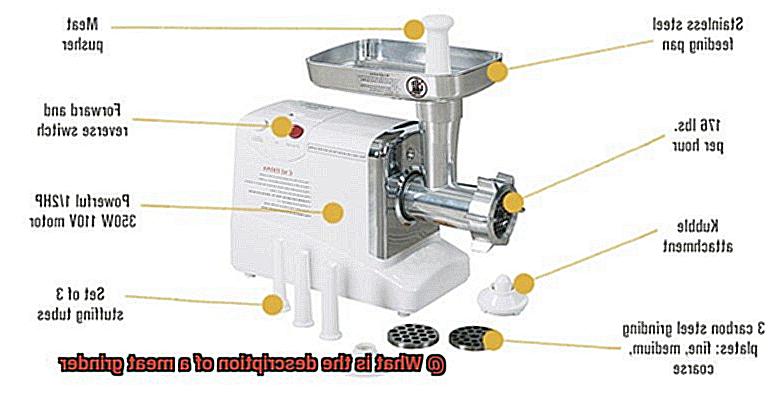
Commercial meat grinders are heavy-duty machines that can process large quantities of meat quickly. They are designed for use in butcher shops, restaurants, and other food service establishments. Commercial meat grinders come in different sizes and feature powerful motors that can grind tough cuts of meat in no time. These grinders are larger and more expensive than home models but are built to last and can handle heavy use.
Attachment Meat Grinders:
Attachment meat grinders are small grinders that attach to a stand mixer or a food processor. They are perfect for those who already own these kitchen appliances and want to add a meat grinder function. Attachment meat grinders come in different sizes, and they are affordable compared to other types of meat grinders. However, they may not be as powerful as standalone meat grinders.
Materials Used for Meat Grinders
However, choosing the right meat grinder can be a daunting task, especially when you’re not familiar with the materials used in its construction. In this post, we’ll examine the different materials used in meat grinders and their pros and cons.
Stainless steel is the go-to material for the blades and grinding plates of meat grinders due to its durability and rust-resistant properties. It’s an excellent choice for commercial use or frequent home use because it’s long-lasting and easy to clean. Moreover, stainless steel is a food-grade material that won’t react with the food being ground, ensuring that your meat’s quality and taste remain intact.
While stainless steel is a top-notch material, it can be expensive, making it less budget-friendly for some customers. If you’re looking for a more affordable option, plastic is another commonly used material in meat grinders’ construction. Plastic is lightweight and easy to handle, making it ideal for small home-use grinders.
However, plastic has its shortcomings. It’s not as durable as stainless steel and can easily break or crack over time. Additionally, plastic can absorb odors from the meat being ground, leading to an unpleasant smell that can be challenging to remove.
Fortunately, some high-end meat grinders feature a combination of both stainless steel and plastic in their construction. These devices have a stainless steel body with plastic buttons or knobs for easy operation. This fusion offers the best of both worlds: durability and affordability.
Benefits of Using a Meat Grinder
Whatever your situation may be, using a meat grinder has some serious benefits that can revolutionize your cooking experience.
First and foremost, using a meat grinder gives you complete control over what goes into your ground meat, from the cuts of meat to the ingredients used. Say goodbye to mystery meat. You can choose which parts of the animal to include, omit any unwanted ingredients, and create a healthier, more customized version of ground meat.
But that’s not all – with a meat grinder, you can also customize the texture of your ground meat to perfection. Whether you’re making a hearty chili or a delicate meatball, you can adjust the grind size to achieve the exact texture needed. This flexibility is especially useful for dishes that require varying textures.
Using a meat grinder can also save you money in the long run. While there is an initial investment in purchasing a grinder, it pays off over time by allowing you to buy larger cuts of meat and grind them yourself. This is often less expensive than buying pre-packaged ground meat, and it guarantees that you get the most bang for your buck.
In addition to these benefits, using a meat grinder is also more environmentally friendly. By grinding your own meat, you can reduce waste by utilizing all parts of the animal. This means that nothing goes to waste, and you’re doing your part for the planet.
Furthermore, if you choose to buy meat from local farmers who use sustainable and ethical practices, you can feel good about supporting a more responsible food system. This ensures that your meat is free from chemicals and hormones while promoting animal welfare.
How to Choose the Right Meat Grinder
If so, a meat grinder is a must-have tool in your kitchen. But with so many options available, it can be challenging to choose the right one for your needs. Here are five factors to consider when choosing the perfect meat grinder for your kitchen.
Type of Meat Grinder
The first factor to consider is whether you want a manual or electric meat grinder. Manual meat grinders are affordable and can be used anywhere, but they require physical effort to operate and may not be as efficient as electric models. Electric meat grinders are more powerful and can handle larger quantities of meat in less time, but they tend to be more expensive.
Size of Meat Grinder
The size of the meat grinder is another important factor to consider. Meat grinders come in different sizes, so you need to choose one that suits your needs. A small tabletop model may be sufficient if you only plan on grinding small amounts of meat at a time. However, if you plan on grinding large quantities of meat, then a larger industrial machine may be necessary.
Type of Meat
Consider the type of meat you will be grinding. Different types of meat require different levels of power and durability from the grinder. For example, if you plan on grinding tough cuts of meat like beef or pork, you may want a grinder with a high horsepower motor.
Durability and Quality
Look for a grinder made from high-quality materials that can withstand frequent use without breaking down. Stainless steel is the best material for a meat grinder because it is durable, easy to clean, and rust-resistant. Heavy-duty plastic is also a good option if you’re looking for something lightweight and affordable.
Additional Features
Finally, consider any additional features that the meat grinder may have. Some models come with attachments for making sausage or other types of ground meats, while others may have multiple grinding plates for different levels of coarseness. These features can add versatility to your meat grinder and make it a valuable addition to your kitchen.
Cleaning and Maintenance Tips for Your Meat Grinder
One that is not properly cleaned and maintained can not only affect the quality of your ground meat but can also pose health risks. Here are five essential tips to keep your meat grinder in top shape:
Disassemble and Clean After Each Use
Your meat grinder can accumulate meat residue or oils during use, leading to bacteria growth and contamination between uses. To avoid this, it’s crucial to disassemble and clean all the parts with warm soapy water after each use. Use a soft-bristled brush or sponge to avoid damaging the components.
Sanitize
Once cleaned, sanitize your meat grinder with a solution of one tablespoon of bleach per gallon of water. This will kill any lingering bacteria that may be on the parts. Make sure to rinse thoroughly to remove any remaining bleach.
Dry Thoroughly
Moisture left on the parts after cleaning can lead to rust and corrosion, damaging your appliance. It’s important to dry all parts completely before reassembling the grinder. Use a clean cloth or paper towel to ensure they are dry.
Lubricate
Applying food-grade lubricant to the moving parts of your meat grinder will keep them running smoothly and prevent rust and corrosion. Make sure to use a lubricant that is safe for food contact.
Store Properly
Avoid storing your meat grinder in damp or humid areas as this can lead to rust and corrosion. After cleaning and drying it thoroughly, store each part separately in a dry and clean place.
In addition to regular cleaning, maintaining your blades is crucial for proper grinding performance. Dull blades can cause meat to get stuck or result in uneven grinding, affecting the texture and taste of your ground meat. To sharpen your blades, use a honing stone or a sharpening tool specially designed for meat grinders.
Common Uses for a Meat Grinder
A meat grinder can help take your cooking to the next level in a variety of ways.
First and foremost, a meat grinder is perfect for grinding meat. By grinding your own meat, you can ensure that it is fresh and free from any unwanted additives or preservatives often found in store-bought ground meat. But, that’s not all a meat grinder can do.
One of the most popular uses for a meat grinder is making homemade sausages. With the sausage attachment, you can easily create your own sausages with your preferred ingredients and flavors. This allows for ultimate customization of taste and texture, making each sausage uniquely delicious.
For those following a vegetarian or vegan diet, a meat grinder can also be used to make plant-based meat substitutes. By grinding vegetables like mushrooms, carrots, and lentils, you can create a ground texture similar to ground meat. This opens up a whole new world of recipe possibilities for those avoiding animal products.
But wait, there’s more. A meat grinder can also be used to grind nuts, cheese, and bread crumbs. This is perfect for creating toppings for dishes like salads, pasta dishes, and casseroles. With the meat grinder, you’ll be able to create these toppings quickly and easily without having to manually chop or grate the ingredients.
Safety Tips When Using a Meat Grinder
Using a meat grinder at home can be a great way to ensure that the meat you consume is fresh and of high quality. However, it’s important to keep safety in mind when operating this potentially dangerous machine. Here are five safety tips to follow when using a meat grinder:
Firstly, take the time to read the instruction manual thoroughly before using the machine. This will familiarize you with the equipment and help you understand how to operate it safely. Secondly, always wear protective gear such as cut-resistant gloves and eye protection to prevent any potential injuries while grinding meat.
Thirdly, be sure to keep your fingers and hands away from moving parts of the meat grinder. Use the provided pusher tool or other utensils to feed meat into the grinder instead. Fourthly, choose lean cuts of meat that are free from bones, sinew, and cartilage to prevent the machine from jamming and reduce the risk of injury.
Lastly, clean the meat grinder thoroughly after each use. This will prevent any bacteria from growing on the machine and ensure that it continues to function properly. Always remember to unplug your meat grinder when not in use or during cleaning to prevent any accidental start-ups that could result in serious injuries.
UoMPsRDvwqs” >
Conclusion
In conclusion, a meat grinder is not just any ordinary kitchen appliance but an essential tool for anyone who desires the taste of freshly ground meat. Whether you prefer manual or electric grinders, or even attachment grinders, there’s a perfect one out there for every home cook. With the ability to customize the texture and composition of your meat dishes, meat grinders are versatile tools that allow you to create everything from burgers and sausages to homemade pet food or baby food.
When selecting a meat grinder, it’s important to consider factors such as frequency of use and durability of the material. Stainless steel is ideal because it is durable, easy to clean, and rust-resistant. However, plastic grinders are lightweight and less expensive.
Using a meat grinder has many benefits that include complete control over what goes into your ground meat, customized texture options, cost savings over time by grinding larger cuts yourself, reduced waste by utilizing all parts of the animal and supporting sustainable and ethical practices in farming.
However, safety should be prioritized when using a meat grinder at home. Always read the instruction manual thoroughly before using the machine. Wear protective gear such as cut-resistant gloves and eye protection while grinding meat. Keep fingers away from moving parts of the machine during operation and choose lean cuts of meat free from bones or cartilage to prevent jamming or injury risk. Lastly, clean the machine thoroughly after each use.
Investing in a high-quality meat grinder will undoubtedly change your cooking game forever.

